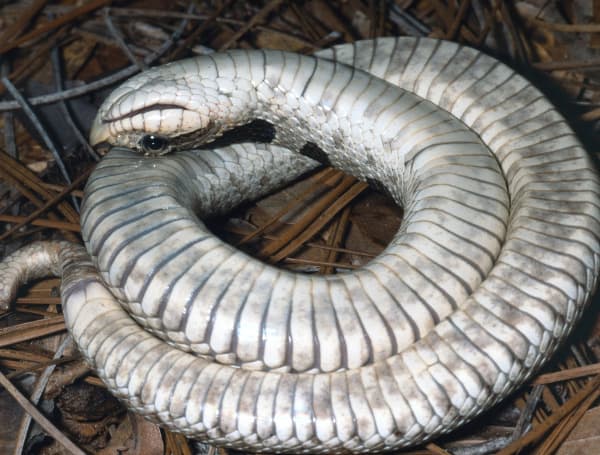It’s World Snake Day and the Florida Fish and Wildlife Commission (FWC) is highlighting a few of Florida’s native snakes that can be found throughout the state — from swamp to sandhill and almost everywhere in between.
According to the FWC, only six of Florida’s 44 native snake species are venomous, but just like nonvenomous snakes, they serve vital functions in maintaining ecosystem balance and are typically not dangerous unless provoked. If you come upon a native snake, simply give it space and enjoy observing it.
What is this Southern hognose snake doing all upside down?
According to FWC, this sandhill-dweller will flatten its head and hiss loudly when threatened — resulting in nicknames such as the hissing adder or hissing sand snake — before sometimes convulsing on its back, defecating and expelling a foul scent from glands at the base of its tail.
It may then remain motionless with its mouth open for several minutes to confuse potential predators. These snakes have sharply upturned snouts, which they use for digging in loose sandy soils. Southern hognose snakes are sometimes confused with pygmy rattlesnakes due to their similar coloration.
The saltmarsh snake can be found along most of the state’s Atlantic and Gulf coasts in grassy tidal flats along Florida’s coastline.
Its diet consists primarily of small fish, but it may also eat crabs and shrimp. Habitat loss and degradation of these areas has resulted in the Atlantic saltmarsh subspecies being listed as federally threatened.
Also known as water moccasins, cottonmouths are found throughout Florida’s wet areas and grow to reach 2-4 feet in length.
This venomous species is often confused with more common, nonvenomous water snakes but can be distinguished by the vertical pupil, facial pit and overhanging brow ridge.
However, if you are close enough to the snake to see these features, you are likely too close to the snake. If you are unsure of the snake’s species, take a step back, take some photos, and look for these features later.
In the news: Police Searching For Violent, Armed Florida Man After Shots Fired During Road Rage
Visit Tampafp.com for Politics, Tampa Area Local News, Sports, and National Headlines. Support journalism by clicking here to our GiveSendGo or sign up for our free newsletter by clicking here.
Android Users, Click Here To Download The Free Press App And Never Miss A Story. Follow Us On Facebook Here Or Twitter Here.
Copyright 2022 The Free Press, LLC, tampafp.com. All rights reserved. This material may not be published, broadcast, rewritten, or redistributed.




